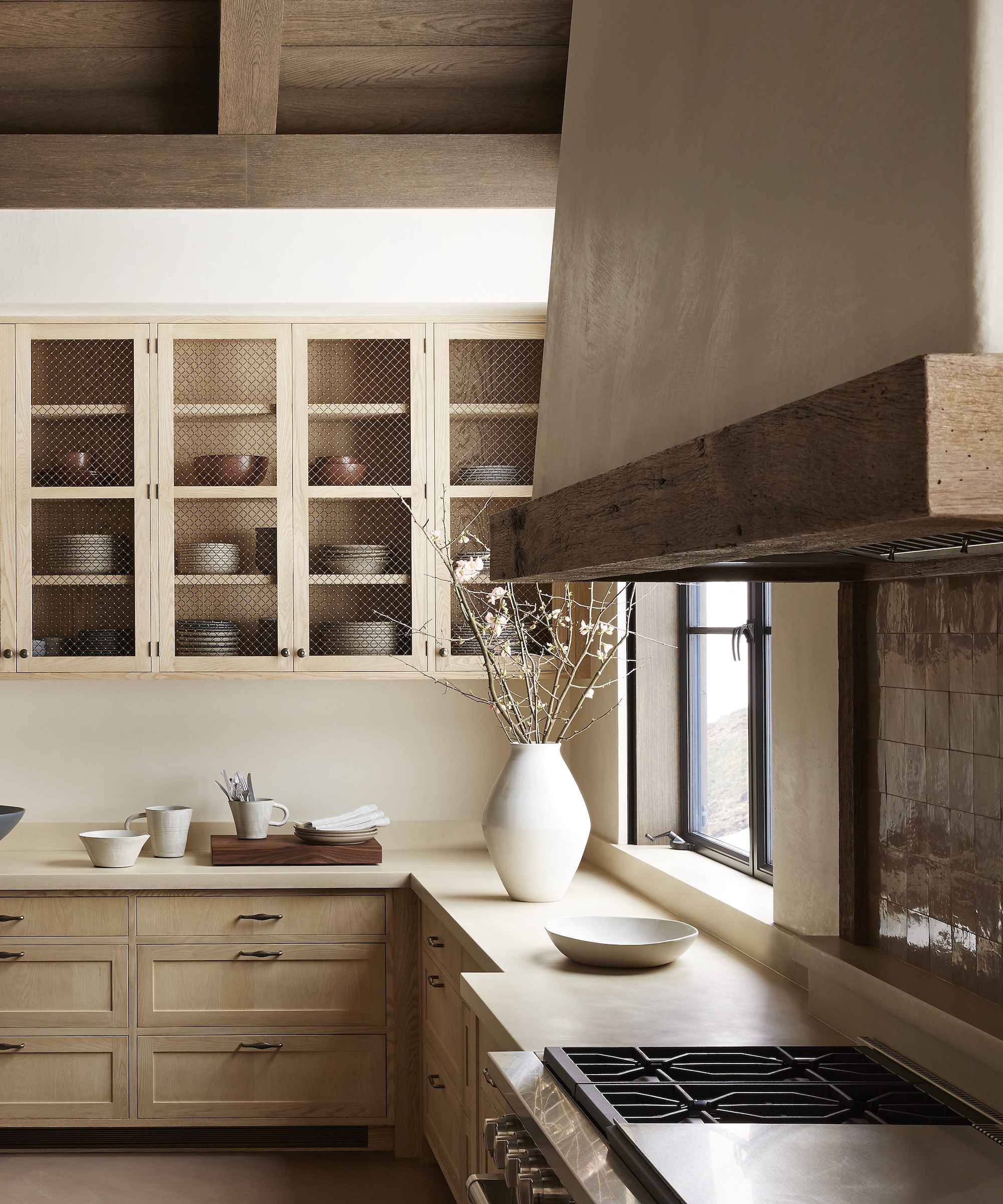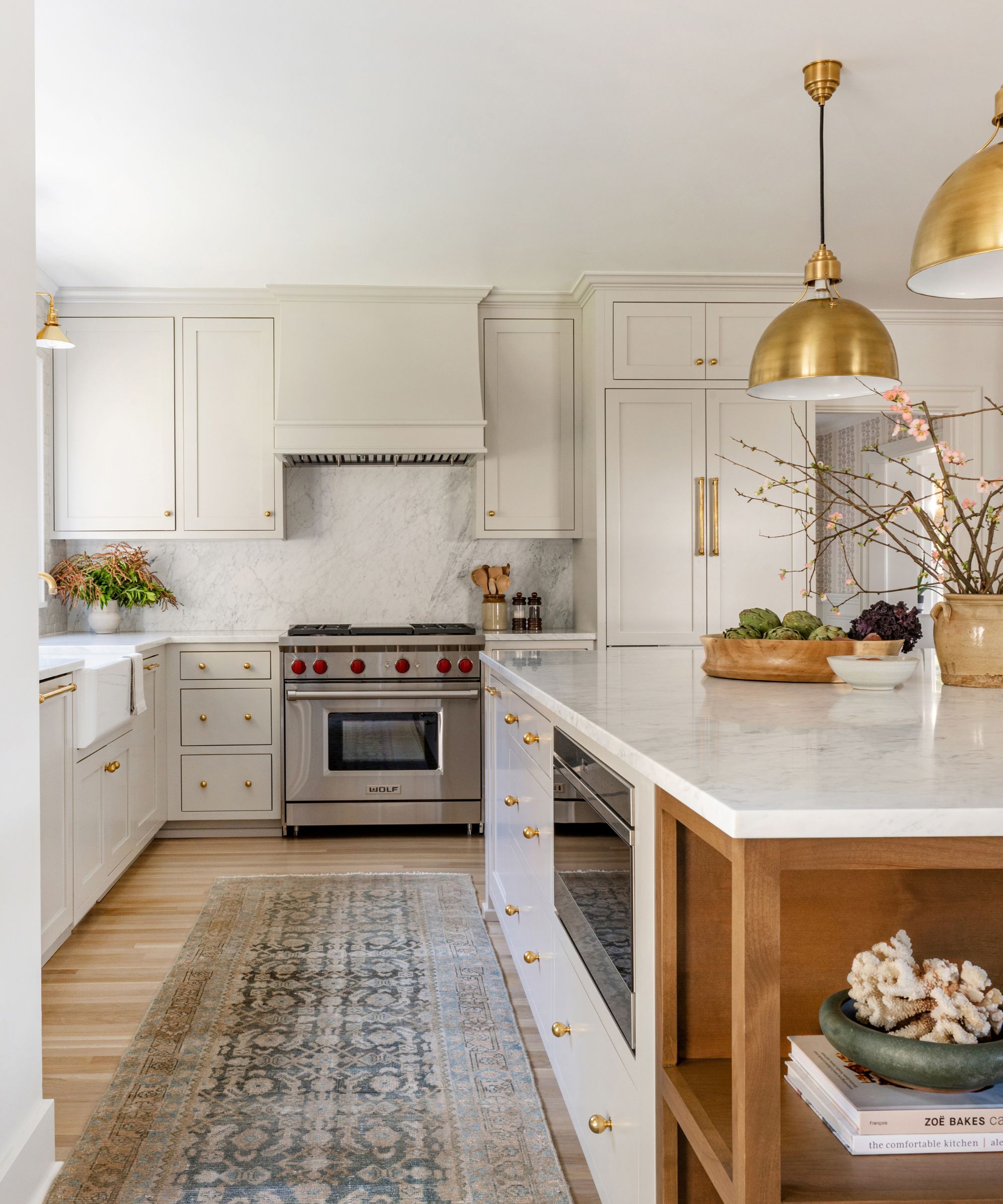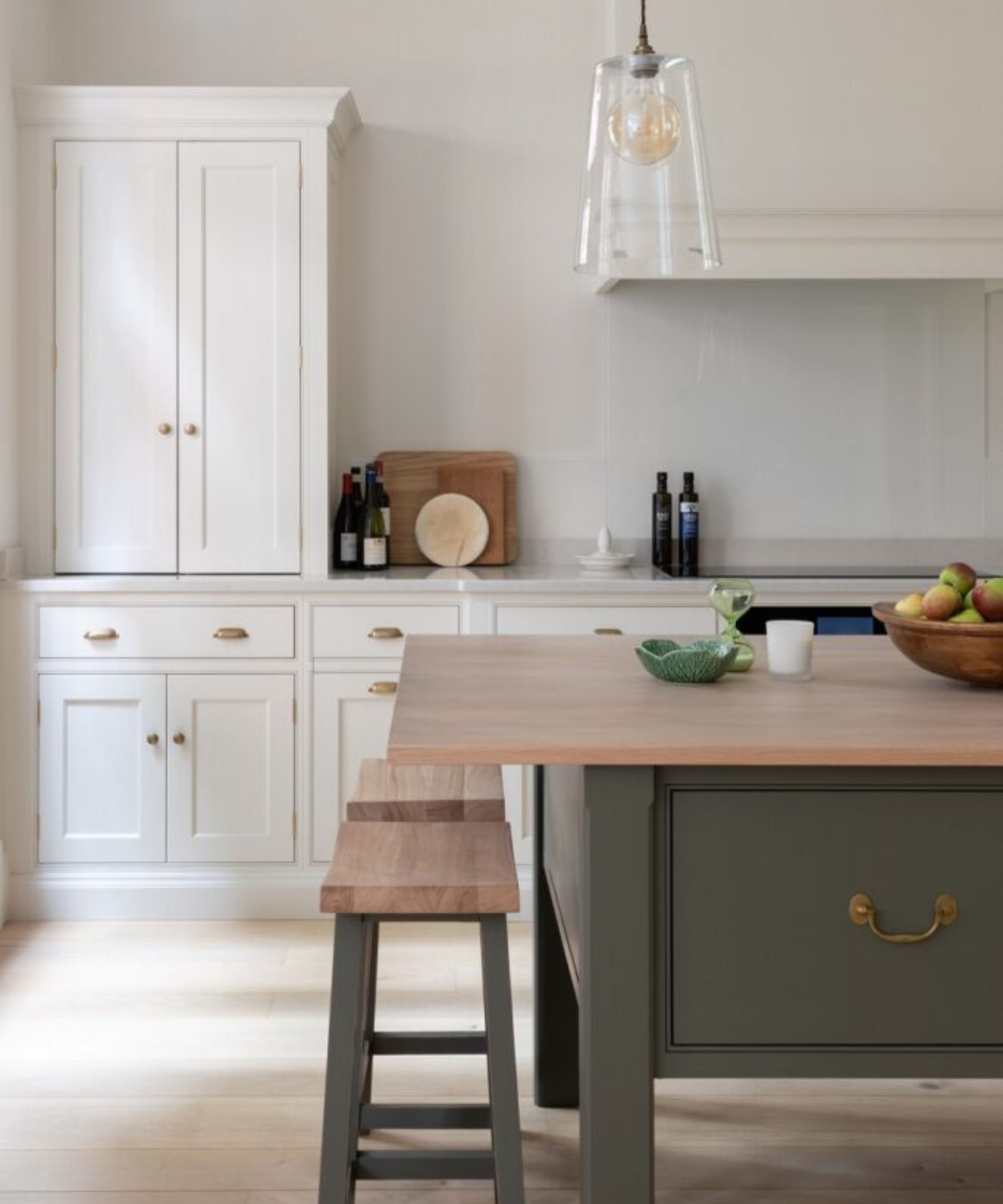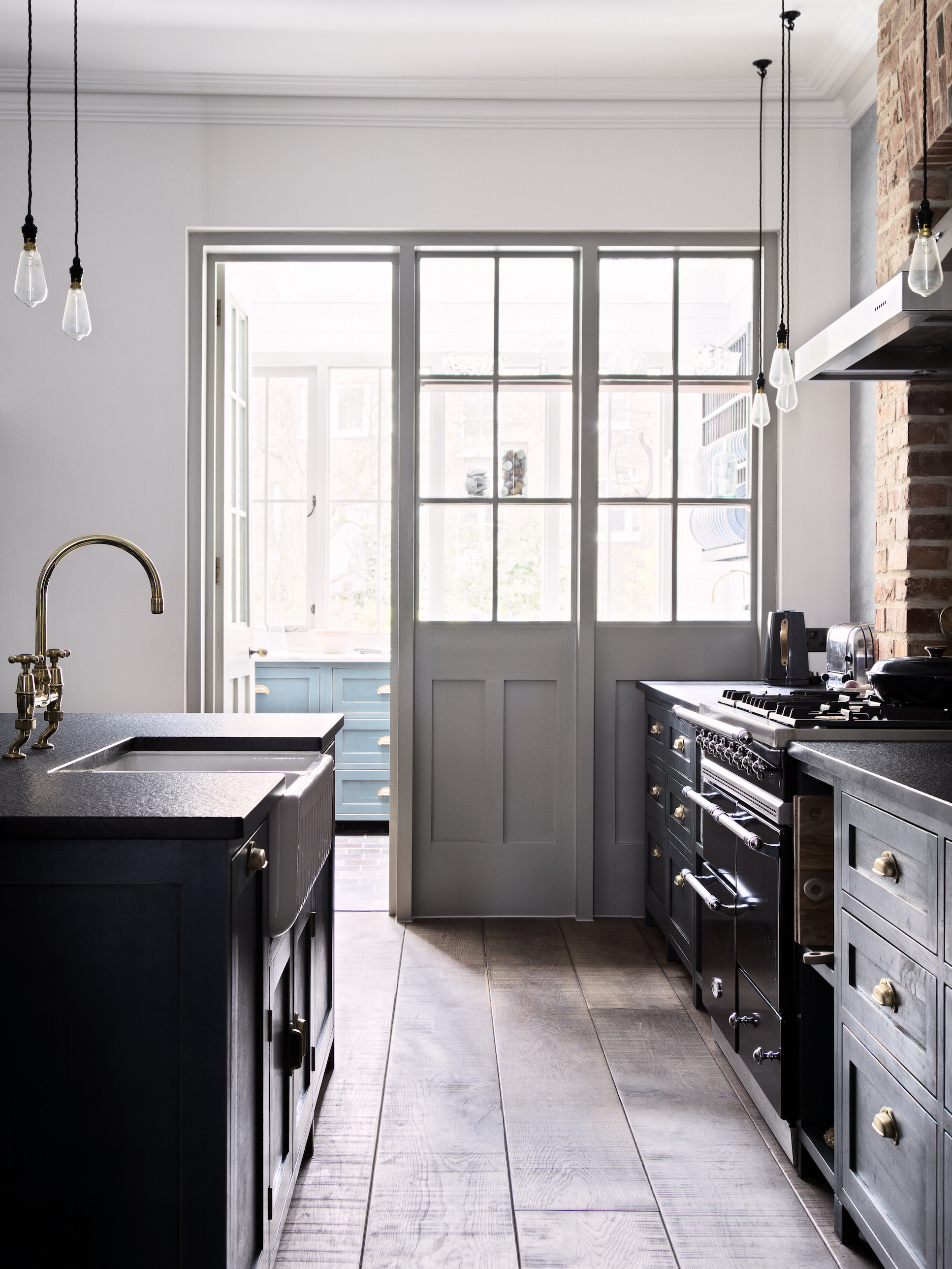
Every type of kitchen requires a unique approach to organizing that ensures functionality and efficiency. When it comes to organizing a transitional kitchen, the goal is to find practical strategies that are tailored to your space and needs, while seamlessly blending the traditional and contemporary styles that it embodies.
A transitional kitchen combines both traditional and contemporary design elements. Therefore, when organizing these kitchens, incorporating modern solutions while maintaining a balance of traditional style can create a versatile space that adapts to your evolving needs while remaining timeless.
We asked organization and interior design experts for their tips on how to organize a transitional kitchen, and here's what they had to say.
How to organize a transitional kitchen
'When organizing a transitional kitchen, start defining a balance between traditional and modern styles that best suit your preferences,' recommends Kerry Sherin, a home expert at Ownerly. 'Establishing your stylistic direction will help to guide your decisions during the organizational process.
1. Plan

Before you start, it's important to accurately measure the space to help you determine how much storage and counter space you have available. This will help to outline your organizational plan, including which items you want to keep, how to arrange them, maximize storage and workflow.
Organizing a transitional kitchen can be tricky since it often has less cabinet space in favor of open shelving or display cabinets, meaning you may have to assess the space and storage options you have according to the items you want on show and which you don't.
2. Declutter and categorize

The next step is to declutter your kitchen. Remove any items you no longer use or need to free up space and make it easier to organize your space without cluttering shelves or counters. If you aren't sure what to do with these items, consider donating them to a local charity if they are still in good, working condition.
Next, group similar items together, like spices, baking supplies, or dishes. This will make it easier to designate storage spaces, find what you need, and keep things organized.
3. Create segmented storage

'Before you start placing items in your transitional kitchen, consider dividing the space into zones based on functionality,' advises Karina Toner, operations manager at Spekless Cleaning. 'For example, have a designated zone for cooking supplies, traditional cookware, modern gadgets and glassware, and a separate area for food storage. This will make it easier to find what you need.'
Finally, get your label maker out to improve accessibility and workflow. Labeling is a great way to keep track of everything for easy identification and efficient retrieval. It's also a great way to communicate where things go for other family members or guests. We like this Phomemo D30 label maker at Amazon.
4. Prioritize accessibility

To keep your kitchen items accessible, keep frequently used products and appliances within reach, and place everyday dishes, utensils, and spices in easy-to-reach kitchen cabinets or drawers.
Display decorative items or frequently used dishes on open shelves for easy access and visual interest. 'Showcase traditional cookware on open shelves or hanging racks,' recommends Karina Toner. 'Copper pots or cast iron skillets can become functional tools and stylish design elements when organizing.'
Consider your workflow and where you use things most to determine the best location for items and to help you organize your kitchen island or kitchen cabinets to improve traffic flow. This will ensure your kitchen has a logical order that will make cooking and tidying up more efficient.
5. Make your kitchen island multifunctional

Transitional kitchens often blend traditional elements with modern functionality. Kitchen islands are the perfect space to design and organize to serve dual purposes, making this workspace more functional.
Start by determining what functions will benefit you the most in this space. For example, consider integrated storage space, having a sink or a stove on a kitchen island, or installing a discreet charging station within the island, including outlets and USB ports.
6. Make storage more functional

Considering how to make the most of existing storage options will make organizing your kitchen simpler.
'Replacing lower cabinets with drawers is a smart move,' says Georgina Ross, interior designer and founder of Simply Tablecloths. Drawers provide easier access to items, eliminating the need to bend or kneel. This is particularly beneficial for storing heavy pots and pans or frequently used kitchen gadgets.
'Additionally, corner cabinets can be challenging in any kitchen style. Utilizing lazy Susans or dedicating these spaces to seldom-used items can maximize utility. This approach ensures that every inch of your kitchen is efficiently used without compromising on accessibility,' and is a great way to make lower kitchen cabinets more functional.
7. Blend appliances and design elements

'The essence of a transitional kitchen lies in its ability to blend the traditional with the modern, combining neutral colors with a low visual stimulus,' says Brenda Scott, professional home organizer and founder of Tidy My Space.
'This can be achieved by having minimal appliances and decor on counters. For items needing to remain on the counters, have them matching in color and finishes where possible.'
'Select hardware and finishes that harmonize with both aspects of the kitchen design,' recommends Georgina Ross. 'For instance, classic cabinet designs paired with contemporary handles can create a cohesive look that respects the kitchen's dual nature.'
Consider how to blend essential large appliances, such as dishwashers, into your kitchen. You can either look for the best kitchen appliances in transitional styles or use paneling to match them to the cabinetry. 'Front panels that match your kitchen cabinets can be installed on the appliances, making them blend seamlessly with the rest of the kitchen,' says Alexander Hill from The Appliance Depot.
Remember, kitchen organization is an ongoing process, so be prepared to adapt and adjust your space as your needs and preferences evolve. By following these general tips and tailoring them to your specific kitchen, you can create a functional and stylish space that reflects your own transitional style.







